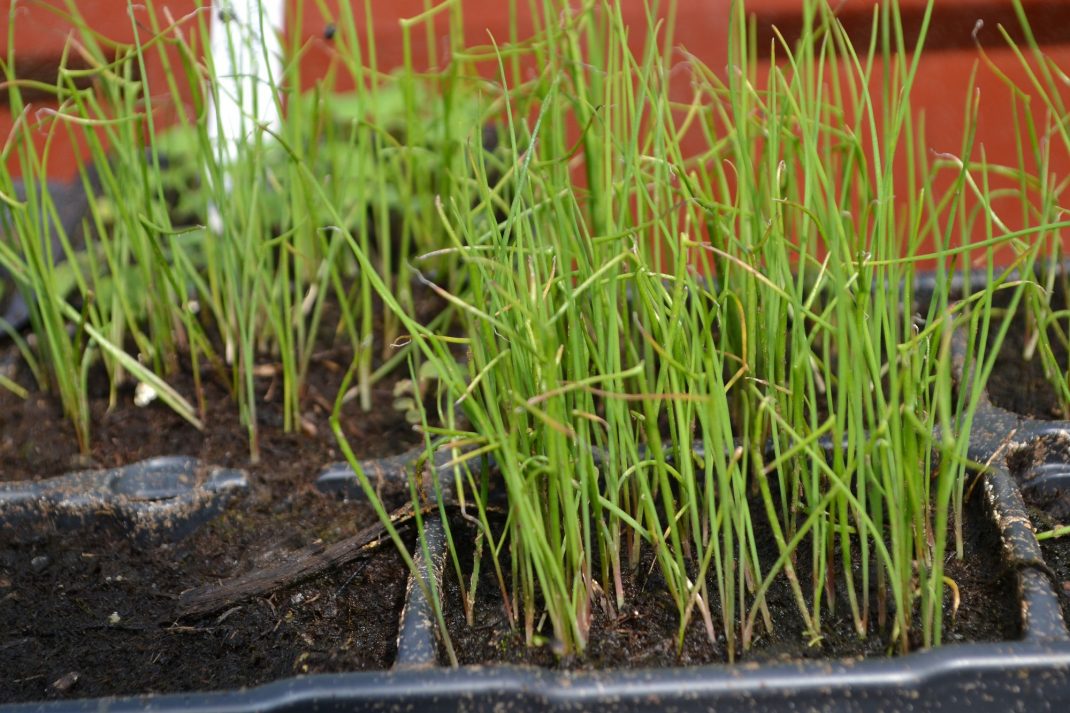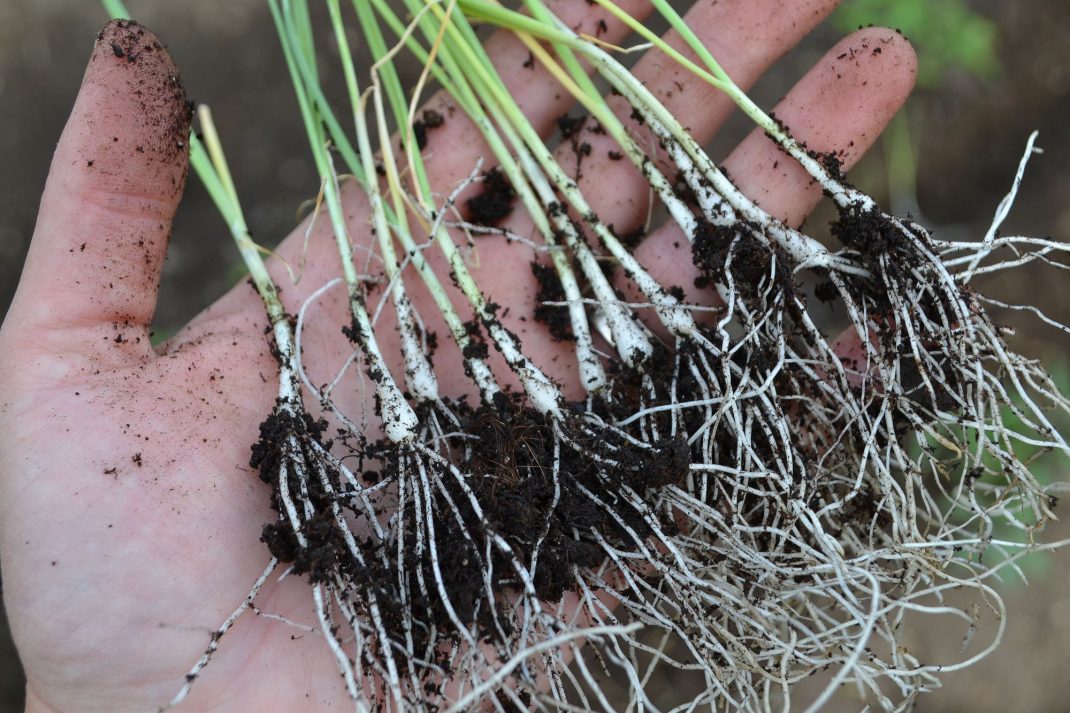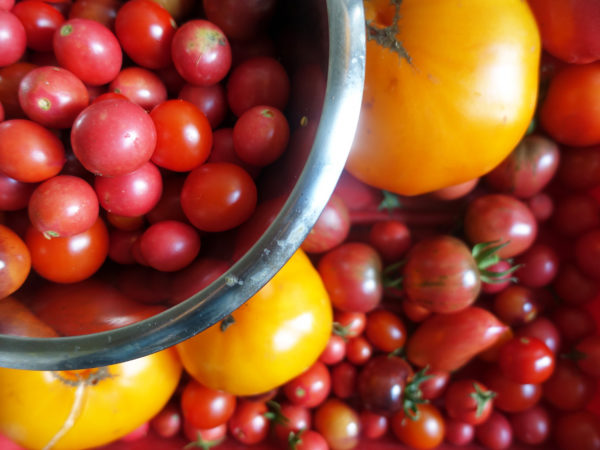Growing alliums from seeds
How are your alliums doing? Mine are doing just fine and it’s almost time to replant them and start on a new batch. It's actually really easy to grow alliums from seeds. I'll show you how it's done below!
I really enjoy growing alliums from seeds. A tiny black, square seed soon develops into a beautiful plant that you can enjoy on your dinner table in no time. Alliums are without doubt one of the most useful vegetables in the kitchen. That’s why I like to put some extra time and effort into growing them. And there are so many different types to choose between!
I grow many different kinds of alliums from seeds. Yellow onions are my favorites though and I try to get better at it each year. I also enjoy growing leek, spring onion (one year old plants), chive and red onion.

Grow chives in clumps. They grow nicely like this and when it’s time to replant them you can just split the clump in a few pieces that then develop into larger tufts.
Sowing allium seeds
I used to put one onion seed in each pot with a nice layer of soil for each and every aspiring plant. And I just couldn’t comprehend how people who grow quite a lot of onions could possibly find the room for all of those pots!
I was waiting and hoping for the best. And then one day, something finally surfaced. I was so excited! Until I saw it… It was a tiny little plant that took ages to grow. Then it finally bent over and just died. Needless to say, this was not the result I was hoping for. But then what’s the right way to grow alliums from seeds?
Here’s the trick: Most alliums (and other plants for that matter) don’t thrive when the soil is too wet! It starts out fine though: The alliums sprout nicely underneath the damp soil. But then the soil gets too heavy and packs around the delicate plant. When the plant looks so frail and unhealthy the knee jerk reaction is of course to water it again. Which of course only makes things worse. The plant can’t absorb all that water and it just gets weaker and weaker in the heavy damp soil. It finally dies.

Leek benefits from being replanted one time before putting it in the ground. But you can succeed even if you don’t do this, if you put a lot of fertilizer in the soil.
What to do instead?
I sow my alliums either in troughs with a thin layer of soil, or in a seedling box where I put the soil in small sections. And I sow, believe it or not, a lot of seeds in each section!
If I’m using a trough then I simply scatter the seeds on the bed. Not too close together but still enough of seeds to create a nice layer on the surface. I put around five seeds in each cluster in the seedling box.
It’s so much easier to control the amount of water in the soil this way. The soil only absorbs as much as it needs. The little plants that are now grouped together help drink the water up and can grow individually without being soaked to the point of drowning.
Keeping your soil too wet is actually bad for many different vegetables. Kale, cucumber, celery, lettuce and many more can’t take it when it gets too wet around the fragile collet of the plant.
You might want to use liquid fertilizer on your alliums before it’s time to replant them (if that’s what you had in mind). Diluted urine works perfectly!

This batch has been stored outside in the polytunnel where it’s been acclimating to colder temperatures and less light. You’ll need some extra light if you keep them inside in room temperature in early spring.
Don’t forget about the light!
If the soil is too wet and the plants are kept somewhere warm but without proper sunlight, you have a recipe for disaster. The plant will start to grow quickly because of the heat but it will turn out tall and lanky because of the limited sunlight. A lanky plant simply can’t support its own weight and it will inevitably get damaged or break. It’s hard to start over at this point and the plant will probably die.
So: Make sure to have plenty of extra light for the plants that are still kept indoors early in the year. A sunny spot in a window facing south could be enough (providing that the sun actually shows up once in a while). If you don’t want to risk it then I recommend that you use extra light sources as well.
Also: Keep your alliums somewhere cool (around 15-18 degrees Celsius, 60-64 Fahrenheit) when they have just sprouted. And again, don’t use too much water. If you follow these steps, I am sure you’ll be able to harvest a lovely batch of alliums in no time!
It’s still possible to start growing many different kinds of alliums. It might be too late for onions but there are many other great options you could still try. Red onions like “Long Red Florence”, chives, spring onions and leeks are just a few examples. Good look growing alliums from seeds!
/ Sara Bäckmo



Leave a Reply
You must be logged in to post a comment.